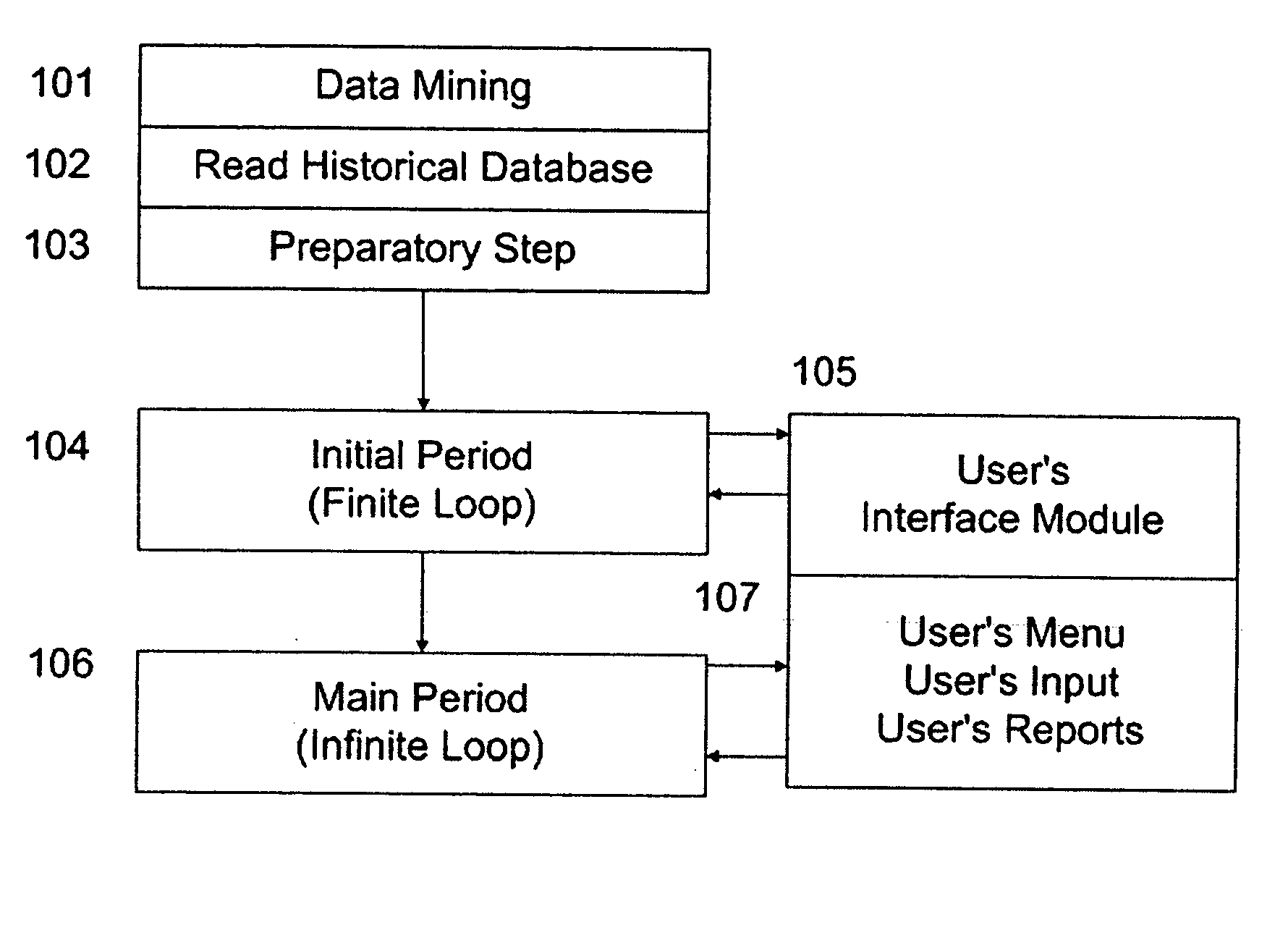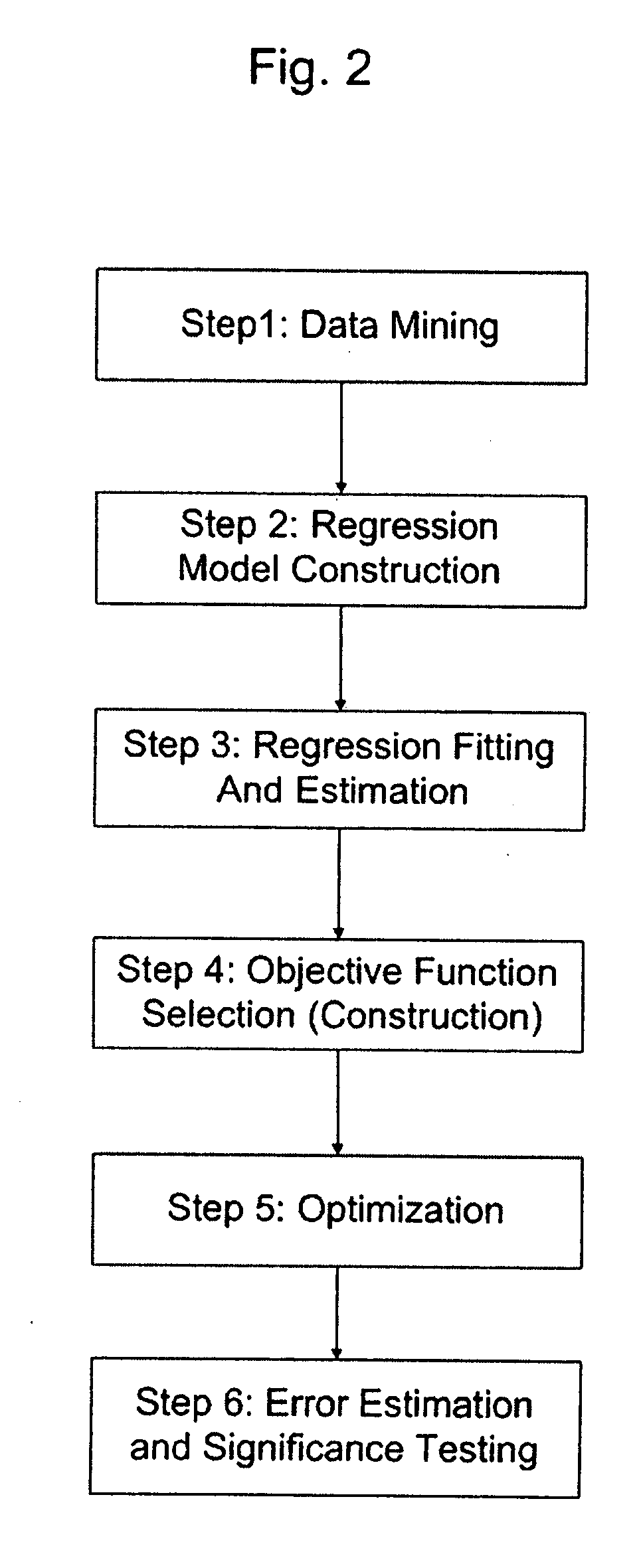System and method for profit maximization in retail industry
a profit maximization and retail industry technology, applied in the field of profit maximization system and method in retail industry, can solve the problems of insufficient historical data, inability to accurately forecast the effectiveness of various promotional tools and price adjustments, and inability to plan various marketing campaigns and pricing adjustments beforehand
- Summary
- Abstract
- Description
- Claims
- Application Information
AI Technical Summary
Benefits of technology
Problems solved by technology
Method used
Image
Examples
Embodiment Construction
[0050] This invention relates to the field of econometrics, and more particularly to a system and method for determining optimum prices for a set of products within a product category in a store, where the optimum prices are defined as the prices that maximize a merchandising figure of merit such as revenue, profit, or sales volume. Along with optimization of prices, this invention provides a means for concurrent demonstration of promotion clips on in-store monitors in such a way that joint influence of pricing and promotion is optimized.
[0051] For achieving these goals, the present invention provides flexible techniques for configuring optimization scenarios from the user interface, determining a set of optimum prices corresponding to the scenarios, and concurrent optimal clip demonstration scenarios, and displaying those optimum prices in a user-friendly form together with other relevant information of potential interest to the user.
[0052] We begin with an example.
[0053] Exampl...
PUM
 Login to View More
Login to View More Abstract
Description
Claims
Application Information
 Login to View More
Login to View More - R&D
- Intellectual Property
- Life Sciences
- Materials
- Tech Scout
- Unparalleled Data Quality
- Higher Quality Content
- 60% Fewer Hallucinations
Browse by: Latest US Patents, China's latest patents, Technical Efficacy Thesaurus, Application Domain, Technology Topic, Popular Technical Reports.
© 2025 PatSnap. All rights reserved.Legal|Privacy policy|Modern Slavery Act Transparency Statement|Sitemap|About US| Contact US: help@patsnap.com



